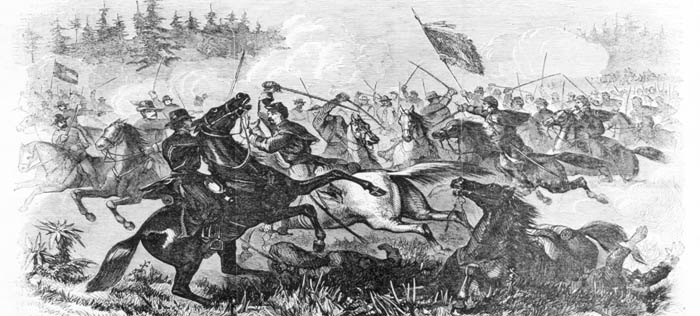When Major General Ambrose Burnside was relieved of command of the Union’s Army of the Potomac following the disastrous Battle of Fredericksburg in December 1862 and the fiasco of his Mud March in January 1863, he was replaced. Major General Joseph Hooker. He soon began to plan his spring campaign and spent the rest of the winter reorganizing and training his army. In winter quarters outside of Fredericksburg, he combined smaller cavalry units, and the training focused on providing the men with more confidence, experience, and leadership skills.
Kelly’s Ford (March 17, 1863) – Occurring in Culpeper County, this battle was one of the early cavalry fights in Virginia that set the stage for Brandy Station and cavalry actions of the Gettysburg Campaign. On March 17, 2,100 soldiers of Brigadier General William W. Averell’s cavalry division crossed the Rappahannock River to attack the Confederate cavalry, which had been harassing them throughout the winter. Confederate General Fitzhugh Lee counterattacked with a brigade of about 800 men. Confederate Major John Pelham, known as the “Gallant,” was killed. After achieving a tactical victory, without destroying Lee’s cavalry, Union forces withdrew in mid-afternoon. The inconclusive battle resulted in an estimated 78 Union casualties and 133 Confederate. The battle foreshadowed the emergence of the Union cavalry, which until that time had been considered very inferior to Confederate troopers.
Compiled and edited by Kathy Weiser-Alexander/Legends of America, updated May 2021.
Also See:
Sources:
Battlefields.org
National Park Service Battle Descriptions (no longer available online)
National Park Service Civil War
Wikipedia

